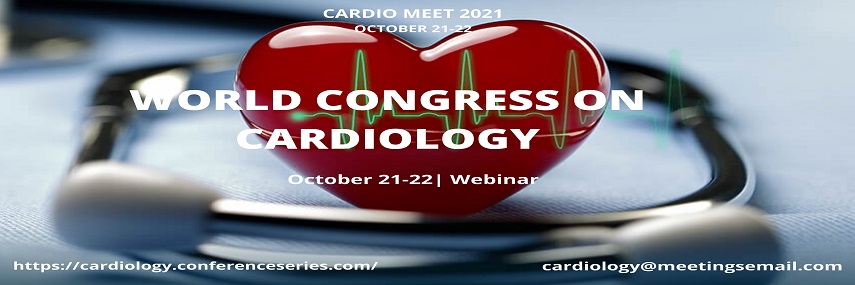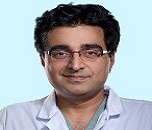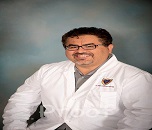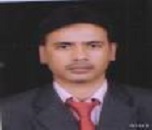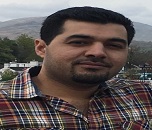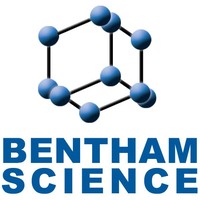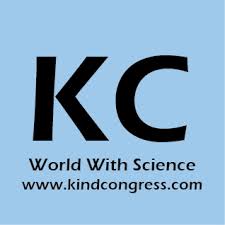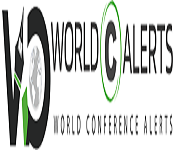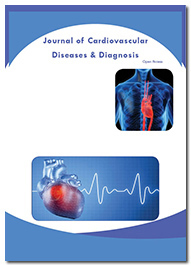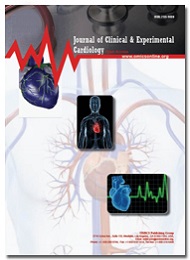Theme: Use Heart to beat Cardiovascular diseases
Cardio Meet 2021
About Conference
On behalf of Cardiology Meet 2021 Organizing Committee, we are pleased to invite researchers, cardiologists, doctors, Physicians, academicians, counsellors, educators, research scientists, self-help group facilitators, teachers, business delegates, young researchers, dieticians and industrialists to give the world a better solution to this problem. The conference will be a platform to globalize one research, to share scientific experiences, to acquire knowledge on new diagnostics methods and treatment procedures. The World Congress on Cardiology which is going to be held on October 21-22, 2021 as a Webinar. The conference highlights the theme of "Use heart to beat cardiovascular diseases".
The scientific program includes Keynote & Plenary talks, Video Presentations, Poster Presentations, and E-Posters. Furthermore, oral communications of (post)doctoral junior scientists will be considered. It is the goal of the organizers to make this meeting an event of scientific excellence, attractive to both industrial and academic scientists in Cardiology and its advancements.
We invite sponsors and exhibitor to showcase your products to our participants and make it reach the public through them. We request you to make use of this opportunity to make the world a better place to live in.
Conferenceseries Ltd is the longest running independent life science events company with a predominantly academic client base. Our multi-professional and multi-specialty approach creates a unique experience that cannot be found with a specialist society or commercially.
Conferenceseries are corporate members of the following organizations
- Royal Society of Biology
- IBMS
- British Society for Immunology
- Rare Care UK
- Opportunities for Conference Attendees
For Researchers &Faculty:
- Speaker Presentations
- Poster Display
- Symposium hosting
- Workshop organizing
For Universities, Associations & Societies:
- Association Partnering
- Collaboration proposals
- Academic Partnering
- Group Participation
For Students & Research Scholars:
- Poster Competition (Winner will get Best Poster Award)
- Young Researcher Forum (YRF Award to the best presenter)
- Student Attendee
- Group Registrations
For Business Delegates:
- Speaker Presentations
- Symposium hosting
- Book Launch event
- Networking opportunities
- Audience participation
For Companies:
- Exhibitor and Vendor Booths
- Sponsorships opportunities
- Product launch
- Workshop organizing
- Scientific Partnering
- Marketing and Networking with clients
Conferenceseries Ltd organizes International Cardiology Meetings annually across Europe, Austria, Ireland, Germany, France, Liechtenstein, Lithuania, Finland, Luxembourg, Hungary, Italy, Norway, Poland, Denmark, Macedonia, Greece, Portugal, Romania, Czech Republic, Switzerland, United Kingdom, Belgium, Scotland, Latvia, Ukraine, Sweden, Denmark, Spain, Netherlands Russia, Bulgaria, France, with solitary subject of quickening logical revelations.
Conference Topics
- Heart failure
- Coronary artery disease
- High Blood Pressure
- Valve Disease
- Cardiovascular Disease
- Diabetes Mellitus and Stroke
- Abdominal Obesity
- Vascular dementia
- Abnormal cholesterol and high triglycerides
- Haemorrhagic Strokes (Bleeds)
- Open heart surgery
- Modern beating heart surgery
- Heart transplant
- Coronary artery bypass grafting
- Minimally invasive surgery
- Aortic stenosis
- Cardiac failure
- Congenital heart disease
- Kawasaki disease
- Rheumatic heart disease
- Acute coronary syndromes (ACS)
- Critical limb ischemia
- Angina
- Arrhythmias
- Acute thrombotic events
- Coronary artery disease
- Heart valve disease
- Peripheral vascular disease
- Angioplasty
- Congenital heart defect correction
- Cardiology applications and diagnostic methods
- Cardiac and vascular imaging
- Vascular grafts and artificial hearts
- Cardiac electrophysiology techniques
- Drug delivery systems
Track 1: Cardiac Surgery
There are numerous one-of-a-kind varieties of cardiac surgeries to be had to cure distinctive type of cardiac troubles a number of them are noted underneathOpen heart surgery
- Modern beating heart surgery
- Heart transplant
- Coronary artery bypass grafting
- Minimally invasive surgery
Track 2: Heart Failure
Heart failure can be brought on by many circumstances that damage the heart including: Coronary artery disease, this is a disease of the arteries that provide blood and oxygen to your heart. It decreases blood flow to our heart muscles. If the arteries slim or get blocked our heart will become starved for oxygen and nutrients and can't pump as good. Heart attack this could occur when a coronary artery is blocked all at once, which stops the flow of blood to our coronary heart muscle. Cardiomyopathy this is harm to our heart muscle tissue that may be as a result of artery or blood float troubles, infections, alcohol, drug abuse and other sicknesses or genetic issues can also carry it on. Make sure your health practitioner knows your circle of family’s health records and conditions that overwork the heart. Those consist of such things as high blood pressure, heart valve disease, thyroid disease, kidney disease, diabetes, or heart defects you've had since you were born. Coronary artery disease
- Heart attack
- Conditions that overwork the heart.
- Cardiomyopathy
Stages of Heart Failure:
Stage A: This is the period when you are at risk for heart failure. You may be in this stage if you have:
- High blood pressure
- Diabetes
- Coronary artery disease
- Metabolic syndrome
You may also be at risk if you have a history of:
- Cardiotoxic drug therapy
- Alcohol abuse
- Rheumatic fever
- Family members with cardiomyopathy
Stage B: You're in this phase if you never had symptoms of heart failure but you're diagnosed with systolic left ventricular dysfunction, which means the left chamber of your heart doesn't pump well. You may be in this group if you had or have:
- Heart attack
- Valve disease
- Cardiomyopathy
Stage C: You're in this phase if you have systolic heart failure along with symptoms such as:
- Shortness of breath
- Fatigue
- Less ability to exercise
Stage D: You're in this phase if you have systolic heart failure and advanced symptoms after you get medical care.
Track 3: Cardio-Oncology
Cardio-oncology is the intersection of coronary heart situations in patients who have been treated for cancer. It's far a developing area that targets to optimize the cardiovascular care obtained by using cancer patients before, all through and after chemotherapy and/or radiation therapy.
Track 4: Clinical Cardiology
Cardiology is a branch of medicine that share out with diseases and abnormalities of the heart . The field also involve medical diagnosis and treatment of congenital heart defects, heart failure, coronary artery disease, valvular heart disease and electrophysiology. Physicians who particularize in this field of medicine are called cardiologists, a department of internal medicine. Pediatric cardiologists are pediatricians who specialize in cardiology. Physicians who specialize in cardiac surgery are called as cardiac surgeons, a department of general surgery.
Track 5: Invasive cardiology
Invasive cardiology uses open or minimally invasive surgery to identify electrical malformation or treat structural within the heart structure. When plaque clogs your arteries, it becomes hard for blood to flow normally. Angioplasty inserts a very small balloon into your clogged vein and pushes plaque against the walls, allowing for higher blood flow. Stenting is usually done in conjunction with angioplasty. A cardiac stent is a tiny metal coil which permanently holds a clogged vein open.
- Angioplasty
- Stenting
Track 6: Non-invasive cardiology
Non-invasive cardiology recognizes heart problems with not using any fluids, needles or other instruments which are inserted into the body. Nuclear cardiology is a non-invasive study of cardiovascular abnormalities by means of various kinds of imaging which may use radioactive elements. Echocardiograph is the utilization of ultrasound waves to generate images of the heart and nearby structures in order to identify how good the heart pumps blood, infections, and structural abnormalities. Cardiac electrophysiology is the study and examining of the electrical currents which generate heartbeats. Stress tests normally involve exercise which is observed by our cardiologist. These exercises provide our cardiologist particulars about how our heart performs under physical stress. Heart monitors may also be called a Holter monitor or cardiac event recorder. Heart monitors are originally tape recorders for our heart electrical activity over a set amount of time. CT scans produce images which our cardiologist can inspect for heart disease and atherosclerosis.Echocardiography
- Cardiac electrophysiology
- Stress tests
- Heart monitors
- CT scans
Track 7: Cardiac Care Nursing
Cardiac nursing is a nursing department that performs with long suffering persons who suffer from different conditions of the cardiovascular system. Cardiac nurses help treat conditions like unstable angina, cardiomyopathy, coronary artery disease, congestive heart failure, myocardial infarction and cardiac dysrhythmia under the guidance of a cardiologist.
Cardiac nurses work with postoperative care on a surgical unit, stress test evaluations, cardiac observing, vascular monitoring, and health judgements. Cardiac caregiver must have Basic Life Support and Advanced Cardiac Life Support certification. Also, cardiac nurses must acquire professional skills includes electrocardiogram monitoring, defibrillation, and medication administration by continuous intravenous drip.
Cardiac nurses work in many dissimilar environments, including coronary care units (CCU), cardiac catheterization, operating theatres, intensive care units (ICU), clinical research, cardiac rehabilitation centres, cardiac surgery wards, cardiovascular intensive care units (CVICU), and cardiac medical wards.
Track 8: Obesity and Heart
Obesity has number of consequences on the cardiovascular system. Chronic accumulation of extra body fat leads to a variety of metabolic changes, increasing the generality of CVD risk factors but also affecting systems modulating inflammation. Obesity develops alterations in other intermediate risk factors like dyslipidemia, HTN, glucose intolerance, inflammatory state, obstructive sleep apnea/hypoventilation, and a prothrombotic state, as well as probably many additional unknown mechanisms. Obesity also induces a different structural adaptations/alterations in CV structure/function. Being obese can increase blood cholesterol and triglyceride levels, lower "good" HDL cholesterol. HDL cholesterol is attached with lower heart disease and stroke risk, so low LDL leads to raise the risk increase blood pressure and diabetes. In few people, diabetes makes other risk factors much worse. The danger of heart stroke is especially more for these peopleCorrelation of obesity and heart:
- Obesity and hypertension
- Obesity and coronary heart disease
- Obesity and heart failure
- Obesity and atrial fibrillation
- Obesity and stoke
- Obesity and ventricular arrhythmias
- Obesity and sleep apnea
- Obesity and venous disease
Track 9: Interventional Cardiology
Interventional cardiology is a non-surgical alternative which uses a catheter flexible tube to restore weakened vessels or damaged, narrowed arteries, or other pretentious parts of the heart structure. Heart valve disease arises when the valves which control blood flow into the heart chambers are not functioning correctly. In Peripheral vascular disease heart can also be pretentious by clogged or hardened arteries and veins in other parts of our body. Angioplasty is an intervention to dilate both arteries and veins. Coronary angioplasty or percutaneous coronary intervention is an intervention for the therapy of coronary artery disease. It can be complete revascularization or culprit-vessel revascularization only. Valvuloplasty, it is the dilation of tapered cardiac valves (usually aortic, mitral or pulmonary). Percutaneous detains can be employed to correct atrial septal and ventricular septal defects, closure of a patient ductus arteriosus, and angioplasty of the great vessels. Percutaneous valve replacement is an alternative to open heart surgery, percutaneous valve replacement is the replacement of a heart valve using percutaneous methods. This is performed on the aortic valve, pulmonary valve and newly the mitral valve. Percutaneous valve repair is performed on the mitral valve using the Mitra Clip system or MONARC system. Coronary thrombectomy requires the removal of a thrombus from the coronary arteries.
- Coronary artery disease
- Heart valve disease
- Peripheral vascular disease
- Angioplasty
- Coronary angioplasty/Percutaneous coronary intervention
- Congenital heart defect correction
- Percutaneous valve replacement
- Percutaneous valve repair
- Coronary thrombectomy
Track 10: Cardiovascular Disease
Cardiovascular disease is a class of diseases that require the heart or blood vessels. Cardiovascular disease includes coronary artery diseases like angina and myocardial infarction known as Heart attack. Other CVDs include Stroke
- Heart failure
- Hypertensive heart disease
- Rheumatic heart disease
- Cardiomyopathy
- Heart arrhythmia
- Congenital heart disease
- Valvular heart disease
- Carditis
- Aortic aneurysms
- Peripheral artery disease
- Thromboembolic disease
- Venous thrombosis.
Track 11: Pediatric Cardiology
Pediatric Cardiologists care for sufferers with congenital or obtained cardiac and cardiovascular malformation. The scope of pediatric cardiology exercise is massive. Pediatric Cardiologists estimate and care for fetuses, toddlers, neonates, youngsters, teens, teenagers, and adults.
Special areas of instructional and clinical interest include: Intensive Cardiac Care, Cardiac Catheterization and Intervention, Electrophysiology, Fetal Cardiology, Imaging, Preventive Cardiology, workout physiology, heart Failure and transplantation, and Pulmonary hypertensioncardiovascular diseases seen in paediatrics are as follows :
- Aortic senosis
- Arrhythmias
- Atrial sptic defect
- Cardiac failure
- Cardiomyopathy
- Coarctation of aorta
- Congenital heart disease
- Endocardial cushion defect
- Kawasaki disease
- Pulmonary atresia and pulmonary stenosis
- Pulmonary hypertension
- Rheumatic heart disease
- Total Anomalous Pulmonary Venous Connection
- Transposition of great arteries
- Tricus arteriosus
- Ventricular septal defect
Track 12: Cardiac Imaging
A physician may additionally advocate cardiac imaging to aid a prognosis of a coronary heart situation. scientific speciality expert businesses discourage the usage of ordinary cardiac imaging during pre-operative evaluation for patients approximately to undergo low or mid-risk non-cardiac surgical treatment because the method carries risks and is not going to result in the change of a patient management. pressure cardiac imaging is discouraged within the assessment of patients without cardiac signs and symptoms or in routine observe-ups.Magnetic resonance
- Coronary CT calcium scan
- Computed tomography angiography
- Positron emission tomography
- Echocardiogram
- Intravascular ultrasound
- Fractional flow reserve
- Coronary catheterization
Track 13: Cardiovascular Diseases during Pregnancy
Pregnancy increases the risk of new-onset SVT. This risk is more in pregnant patients with Wolff-Parkinson-White syndrome. In the absence of structural heart disease, AF and atrial flutter are rare during pregnancy. Non-sustained ventricular arrhythmias takes place in up to 50% of pregnant women, but the clinical risk of sustained ventricular arrhythmia in the absence of structural heart disease is low.
Most antiarrhythmic drugs are divided as category C drugs while pregnancy by the United States Food and Drug Administration (FDA) .Therefore, drug therapy should be used only in patients who have life-threatening arrhythmias or debilitating symptoms. Most β-blockers are classified as category C drugs by the FDA; however, atenolol is classified as a category D drug because it has been implicated in intrauterine growth retardation, and sotalol, pindolol, and acebutolol are classified as category B drugs. The other class C drugs include digoxin, adenosine and heparin, whereas lidocaine and enoxaparin are class B drugs. Enoxaparin is safe for the fetus, but some formulations contain the preservative benzyl alcohol, which can be harmful. Amiodarone is taken as category D drug, and warfarin (category X) should not be used at all during pregnancy because of its teratogenicity.
Track 14: Diabetic Cardiovascular Disease
Even when glucose levels are under control it substantially grow the risk of heart disease and stroke. That's because people with diabetes, especially type 2 diabetes, may have the following circumstances that contribute to their risk for developing cardiovascular disease. Glycemic control
- Obesity
- Dyslipidemia
- Hypertension
- Oxidative stress
- Epigenetics
- Inflammatory cascade, atherosclerosis
- Endothelial dysfunction
- Cardiovascular autonomic neuropathy
Track 15: Women And Cardiac Arrhythmia
Numerous prominent electrophysiological variations have been noted between the sexes. By 5 years of age, girls have a higher heart rate than do boys, which might be explained by a shorter sinus node refractory time. The shorter QT interval in men is cited for the duration of puberty, as intercourse hormone degrees upward push. The length of the QT interval in men increases linearly through adulthood until the age of 50, when it becomes similar to that of women, which correlates with the decrease in androgen levels. Furthermore, QRS amplitude and duration are greater in men, consequent to a higher cardiac mass and thicker left ventricular walls Effects of Sex Hormones
- Atrial Fibrillation
Track 16: Critical Cardiac Care
Critical cardiac care which is also called coronary care unit is a sanatorium ward specialized inside the care of patients with heart attacks, risky angina, cardiac dysrhythmia and diverse different cardiac conditions that require non-stop tracking and treatment or first aid treatment until the health practitioner comes. There also are gadgets available in the hospitals to attend to the emergency state of affairs. The Cardiac intensive care unit(CICU) is a specialized ICU dealing with cardiac patients and is normally staffed via cardiologists. It gives critical care workforce mainly skilled in acute coronary syndromes and has additional technology like intra-aortic balloon pumps and so forth.Cardiopulmonary resuscitation
- Extracorporeal membrane oxygenation (ECMO)
- Clot busting medicine
- Oxygen therapy
- Emergency medicine
- Acute coronary care
- Subacute coronary care
Track 17: Atherosclerosis
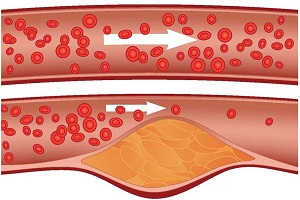
Atherosclerosis is a disease wherein the interior of an artery narrows due to the increase of plaque. to begin with, there are normally no symptoms. whilst severe, it may result in coronary artery disorder, stroke, peripheral artery disease, or kidney problems relying on the arteries which might be affected. Symptoms, if they occur typically do no longer start till center age
Modifiable:
- Diabetes
- Dyslipidaemia
- Tobacco smoking
- Trans fat
- Abdominal obesity
- Western pattern diet
- Insulin resistance
- Hypertension
Non modifiable:
- Advanced age
- Family history
- Genetic abnormalities
The form of artery affected and wherein the plaque develops varies with anybody. Plaque may additionally partially or definitely block blood glide through a massive or medium-sized artery within the coronary heart, mind, pelvis, legs, palms or kidneys. while this takes place, numerous sicknesses may also result. These include:
- Coronary heart disease
- Angina
- Carotid artery disease
- Peripheral artery disease
- Chronic kidney disease.
Track 18: Congenital Heart Therapies
Congenital heart defect is also called as a congenital heart disease or congenital heart anomaly, is a issue in the structure of the heart that is present at birth. Signs and symptoms depend on the specific type of issue. Symptoms can differ from none to life-threatening. When present they may include bluish skin, rapid breathing, poor weight gain, and feeling tired. It does not cause chest ache. Most congenital heart issues do not occur with other diseases. Problems that can result from heart defects also include heart failure.
Cause of a congenital heart defect is frequently unknown. Certain cases may be due to infections while pregnancy such as rubella, use of certain medicaments or drugs like alcohol or tobacco, parents being closely related, or poor nutritional status or obesity in the mother. Having a parent including a congenital heart defect is a risk factor. Number of genetic conditions are connected with heart defects including Down syndrome, Turner syndrome, and Marfan syndrome. Congenital heart defects are classified into two main groups: cyanotic heart defects and non-cyanotic heart defects, depending on whether the child has the potential to turn bluish in color. The problems involve the interior walls of the heart, the heart valves, or the large blood vessels that tend to and from the heart.Hypoplasia
- Obstruction defects
- Septal defects
- Cyanotic defects
Track 19: Non pharmacotherapy for cardiovascular diseases
There are few non pharmacotherapies are available to prevent and to control heart diseases. These non-pharmacotherapies can be developed along with pharmacotherapy.
Track 20: Cardiac Medications
These are different class of drugs which are used to treat cardiac diseases and even to prevent occurrence of cardiac failure
- ACE inhibitors: These medications stop stress hormones and relieve stress on the heart pumping action. They increase symptoms and reduce hospitalizations for patients with heart failure.
- Antiarrhythmics: These control irregular heartbeats — and maintain a normal heart rate and rhythm.
- Anticoagulants and platelet inhibitors: These cause your blood to take longer to clot, which can decrease the risk of strokes and heart attacks that can occur when blood clots get plunge in small blood vessels.
- Antihypertensives: These are commonly used to treat high blood pressure by relaxing and widening blood vessels.
- Beta blockers: These medications are frequently prescribed to treat angina, high blood pressure, and abnormal heart rhythms. They stop stress hormones and relieve stress on the heart’s pumping movement . Relax the blood vessels so blood can move with more ease. Improve the heart’s function . Decrease symptoms and lessen the chance of future hospitalizations
- Calcium channel blockers: These are mostly used to treat high blood pressure, coronary artery spasms, and angina. They stop the normal flow of calcium into the cells of the heart and blood vessels, which discourages smaller vessels from narrowing and going into spasm, and also decreases the heart’s workload and need for oxygen.
- Digitalis glycosides: These strengthen the heart muscle, treat irregular heart rhythms, and improve exercise tolerance.
- Diuretics: These helps in getting rid of our body excess fluid and salt. They are often prescribed for high blood pressure and congestive heart failure.
- Lipid medications: The medications in this set work in different ways depending on which one you’re taking, lipid medications can decrease your levels of cholesterol, LDL, and triglycerides — as well as treat unusual low levels of HDL cholesterol.
- Nitrates and other antianginals : These are usually used to prevent, reduce, or relieve angina pain. They perform by relaxing blood vessels and increasing the distribution of blood and oxygen to the heart — while decreasing the blood pressure that your heart has to pump against.
Track 21: Current Research In Cardiology
Cardiology conferences contains the current research in cardiology comprises the new innovative methods that are coming in cardiology related field.Statin therapy
- Thrombolytic therapy
- Cardiac rehabilitation
- 3-D imaging
- Wearable technologies
- Wireless technologies and biosensors
- Percutaneous mitral valve repair devices
- 3-D bioprinting
The worldwide fair for interventional cardiology tools touched an estimated $12.2 billion in 2014. According to a new study by Smithers Apex – The Future of Coronary Artery Disease Healing Devices to 2021 – it will raise to $22.5 billion (€20.9 billion) by 2021, with a year-on-year increase of 9.1%.Response for coronary artery disease medical expedients will grow through 2021 as clinically viable and cost-effective solutions are developed. The statement covers three major divisions of cardiology surgery, devices and medications market which includes surgeries, devices and drugs. Cardiac diseases are the number one cause of death universally. Some of the major CVDs include coronary core diseases, stroke, hypertensive heart diseases, inflammatory heart diseases, rheumatoid heart diseases and others. Coronary heart diseases are the leading source of death followed by strokes. The prevalence and incidence rate of core diseases are on a rise; especially in major emerging countries such as India, China and Japan. The market of cardiology surgery, devices and medications are also on a rise.
Cardiac disease is the major reason of death across the world. It assessed that for 17.3 million passing in 2015 and is further predicted to claim 23.6 million survives in 2030 (according to estimation by the World Health Organization). The International Diabetes Federation has valuing that approximately 415 million people were diabetic in 2015 while the number is predictable to increase 642 million universal by 2040. The advanced cardiac intervention market provides dealing choice for a series of cardiovascular diseases which consist of coronary artery disease, heart valve disease, and peripheral vascular disease, among others. The growth in geriatric population wide-reaching has resulted in an increased prevalence of the disease. Moreover, change in eating habits, increased pressure, smoking, and alcohol consumption, and disturbed sleeping patterns are some of the key issues subsidizing to the deteriorating health conditions and to the rise in lasting diseases such as diabetes and cardiac diseases
Conference Highlights
- Cardiac Surgery
- Heart Failure
- Cardio-Oncology
- Clinical Cardiology
- Invasive cardiology
- Non-invasive cardiology
- Cardiac Care Nursing
- Obesity and Heart
- Interventional Cardiology
- Cardiovascular Disease
- Pediatric Cardiology
- Cardiac Imaging
- Cardiovascular Diseases during Pregnancy
- Diabetic Cardiovascular Disease
- Women And Cardiac Arrhythmia
- Critical Cardiac Care
- Atherosclerosis
- Congenital Heart Therapies
- Non pharmacotherapy for cardiovascular diseases
- Cardiac Medications
- Current Research In Cardiology
To share your views and research, please click here to register for the Conference.
To Collaborate Scientific Professionals around the World
| Conference Date | October 21-22, 2021 | ||
| Sponsors & Exhibitors |
|
||
| Speaker Opportunity Closed | |||
| Poster Opportunity Closed | Click Here to View | ||

